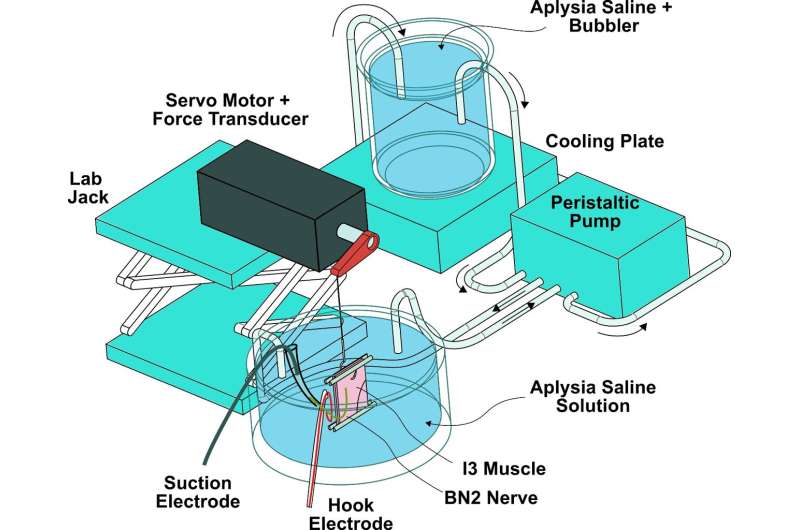
Carnegie Mellon University researchers at the Biohybrid and Organic Robotics Group (B.O.R.G.) led by Victoria Webster-Wood, in collaboration with researchers at Case Western Reserve University, are studying the sea slug feeding structure to learn more about how the brain, muscular system and nervous system interact. Their research is being used both in robots and in simulations as part of a multinational research collaboration studying neuromuscular systems.
Aplysia californica, or more commonly, sea slugs, are being observed in the research. Of particular interest is the animal's feeding structure, which allows the animal to interact with the environment.
"From a mechanical engineering standpoint, the system is fascinating because there are no bones—it's just muscle attached to muscle," said Webster-Wood, associate professor of mechanical engineering. "There's a big gap in our understanding of the mechanics, the force capabilities and the dynamics of individual muscles within the structure."
What can sea slugs reveal about the neuromuscular system?
By studying this neuromuscular control in soft-bodied animals, the researchers hope to learn more about the way certain muscular structures operate, including those of trunks, tentacles, tongues and the feeding apparatus of the sea slug itself.
Out of the 10 to 12 identified muscle groups in the slug's feeding structure, only one had a model so far. In their most recent collaborative work, now published in Biological Cybernetics, the CMU B.O.R.G. collaborated with the Chiel Lab at CWRU and focused on creating a model of the I3 muscle, which plays a key role in retraction of the grasper within the feeding apparatus.
Ravesh Sukhnandan, a Ph.D. student in Webster-Wood's lab and first author of the paper, was responsible for most of the data fitting and analysis for the model.
"This project was a great opportunity to dive deeper into the biology and function of muscle," said Sukhnandan. "The knowledge gained from this project will help us to develop better computational models of Aplysia's feeding behavior, as well as design more realistic Aplysia-inspired soft robots."
The future of soft robots
As soft-body robots are becoming an increasingly promising field of study, Webster-Wood believes that learning about physical muscle will help in the design and mechanics of future soft robots.
"On the longer horizons, my goal is to create sustainable, completely biocompatible, biodegradable robots," said Webster-Wood. "So, the more we can understand about the neuromuscular systems in existing animals, the better we'll be able to design biohybrid robots of our own."
More information: Ravesh Sukhnandan et al, Full Hill-type muscle model of the I1/I3 retractor muscle complex in Aplysia californica, Biological Cybernetics (2024). DOI: 10.1007/s00422-024-00990-3
Citation: Sea slug feeding structure model informs soft robot design (2024, July 24) retrieved 24 July 2024 from https://techxplore.com/news/2024-07-sea-slug-soft-robot.html
This document is subject to copyright. Apart from any fair dealing for the purpose of private study or research, no part may be reproduced without the written permission. The content is provided for information purposes only.
